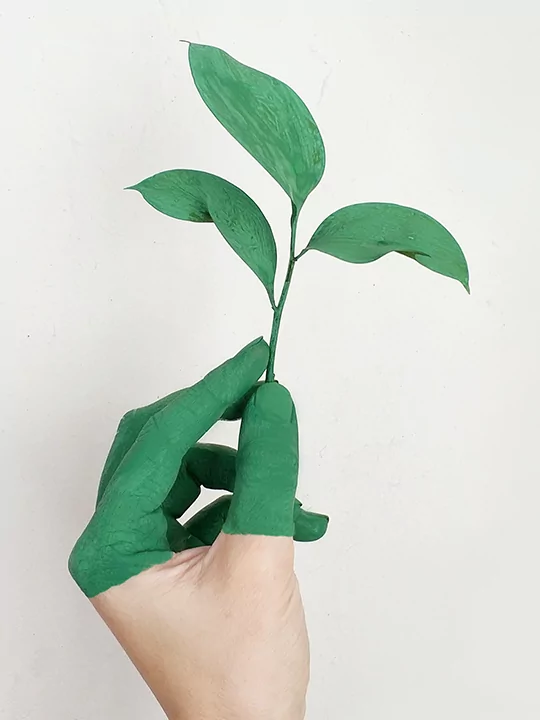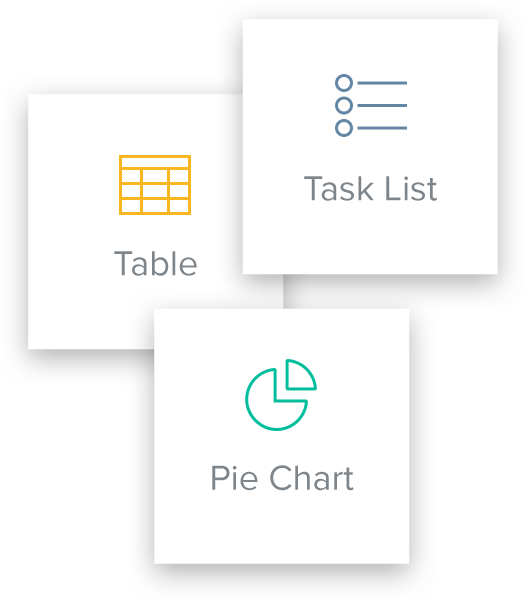10 Essential Qualities of a Successful Scrum Product Owner
Updated by Xtensio
Introduction
Scrum stands out as a beacon of agility and efficiency. Central to this methodology is the Scrum Product Owner—a role akin to the captain of a ship, steering the product through turbulent waters of stakeholder expectations and market changes. If you’ve ever wondered about the magic behind successful products, you’re about to uncover some of its secrets.
Table of Contents
The Role of a Scrum Product Owner
Imagine being the linchpin that holds the vision of a product and the hard work of a development team together. That’s the Scrum Product Owner for you.
Definition and Primary Responsibilities
At its core, the Product Owner is the voice of the user within the Scrum team. They’re responsible for defining user stories, ensuring that the team’s work aligns with stakeholders’ expectations, and prioritizing the product backlog. Think of them as the product’s chief advocate, always ensuring the user’s needs are at the forefront. For instance, consider Spotify. A Product Owner at Spotify might prioritize features like personalized playlists or podcast recommendations based on user feedback and market research.
The distinction between Product Owner and Scrum Master
It’s easy to confuse the two, but here’s an analogy: If the Scrum team were a car, the Product Owner would be the driver, deciding the destination, while the Scrum Master would be the mechanic, ensuring the car runs smoothly.

10 Essential Qualities of a Scrum Product Owner
1. Visionary Mindset
Every great product starts with a vision. The Product Owner not only crafts this vision but also communicates it effectively to the team. Visionary leaders, as highlighted by Forbes, often possess foresight, imagination, and resilience.
2. Stakeholder Communication
Effective communication is the bridge between conflicting stakeholder demands and team capabilities. A Product Owner must master this art. Regular stakeholder meetings can help in setting clear expectations and understanding their concerns.
3. Decisiveness
Delays can be costly. A Product Owner’s ability to make swift, informed decisions can be the difference between success and stagnation. Jeff Bezos, Amazon’s founder, often talks about making high-quality, high-velocity decisions.
4. Deep Product Knowledge
A Product Owner should know their product like the back of their hand, from its strengths to its areas of improvement. Apple’s commitment to user experience and design can be attributed to Product Owners who deeply understand their users’ needs.
5. Empathy for the Development Team
Empathy builds trust. By understanding the challenges faced by the development team, a Product Owner can foster a positive working environment. Regular one-on-ones with team members can help in understanding their challenges and aspirations.
6. Flexibility
A Product Owner should be ready to pivot based on feedback and market changes. Instagram’s transformation from a check-in app called Burbn to the photo-sharing giant it is today is a testament to the power of adaptability.
7. Leadership Skills
A Product Owner leads from the front, setting the direction and inspiring the team. Leadership isn’t about authority but influence. A Product Owner’s influence stems from their expertise and relationship with the team.
8. Negotiation Skills
With various stakeholders having different demands, striking a balance is crucial. The development of features like “Dark Mode” in many apps often comes from Product Owners negotiating between user demands and technical feasibility.
9. Analytical Thinking
In a world driven by data, analytical skills are invaluable. They help in making informed decisions. Netflix’s recommendation system, which suggests shows based on user preferences, is a shining example of data-driven decision-making.
10. Commitment to Continuous Improvement
The quest for improvement never ends. Be it personal growth or product enhancement, a Product Owner is always on the lookout for betterment. Regular feedback sessions with users and stakeholders can provide valuable insights for improvement.
Challenges Faced by Scrum Product Owners
Being a Scrum Product Owner is akin to being a master juggler, balancing a myriad of responsibilities and expectations. Here are some of the most pressing challenges they face:
Balancing Stakeholder Expectations
Every stakeholder, from marketing to finance, has their own vision and priorities. The Product Owner often finds themselves in the middle, trying to balance these varying expectations while ensuring the product’s overall success. It’s not just about managing demands but also about managing relationships, ensuring that every stakeholder feels heard and valued.
Keeping Up with Market Changes
What’s trending today might be obsolete tomorrow. For a Product Owner, staying updated with the latest industry trends, competitor moves, and technological advancements is crucial. Remember the rapid rise of TikTok and how it disrupted the social media space? Product Owners need to be prepared for such market shifts.
Ensuring Team Alignment
With multiple team members working on different aspects of the product, ensuring everyone is aligned with the product vision can be a challenge. It’s not just about ensuring everyone is on the same page but also about fostering a culture of open communication and collaboration.
Navigating Technical Limitations
While a feature or enhancement might sound great on paper, it might not always be technically feasible. Product Owners often have to navigate the tricky waters of what’s desirable versus what’s achievable, ensuring that the product remains innovative yet realistic.
Managing Time and Priorities
There’s always more to do than there is time. Prioritizing tasks, managing the product backlog, and ensuring timely deliveries while maintaining product quality can be a daunting task.
Benefits of Being a Scrum Product Owner
While the challenges are many, the role of a Scrum Product Owner is immensely rewarding, both professionally and personally. Here’s why:
Direct Impact on Product Success
Few roles offer the satisfaction of seeing a direct correlation between one’s efforts and the product’s success in the market. Every decision made by a Product Owner has the potential to impact thousands, if not millions, of users. Imagine the pride a Product Owner at Slack would feel, knowing their decisions facilitate seamless communication for teams worldwide.
Cross-functional Collaboration
The role offers a unique vantage point. Product Owners get to collaborate with diverse teams, from marketing and sales to design and development. This not only broadens their perspective but also enriches their professional network.
Continuous Learning Opportunities
The agile nature of Scrum means there’s always something new around the corner. Be it a new market trend, a novel technological advancement, or a fresh user insight, the learning never stops. This continuous evolution ensures that the role never becomes monotonous.
Recognition and Career Advancement
A successful product can catapult a company to new heights, and with it, its Product Owner. The recognition that comes with a job well done can open doors to new opportunities and career advancements.
Personal Growth and Skill Development
Beyond the professional realm, the role hones skills that are invaluable in personal life. From decision-making and negotiation to leadership and communication, the skills developed as a Product Owner are lifelong assets.
Ethical Considerations and Responsibilities of a Scrum Product Owner
Being at the helm of product decision-making, a Scrum Product Owner often grapples with ethical dilemmas. Their choices can have far-reaching consequences, affecting users, stakeholders, and the broader community. Here are some ethical considerations and responsibilities intrinsic to the role:
User Data and Privacy
Products often handle vast amounts of user data. A Product Owner must prioritize user privacy and ensure that the product adheres to data protection regulations. Decisions about data collection, storage, and sharing should be made transparently, respecting user consent.
Accessibility and Inclusivity
Products should be accessible to everyone, regardless of their physical abilities or socio-economic status. Ethically, a Product Owner should champion features that make the product inclusive, ensuring that it caters to a diverse user base.
Transparency with Stakeholders
Honesty is the best policy. Whether it’s about product timelines, features, or potential roadblocks, stakeholders should be kept in the loop. Misleading stakeholders or making over-optimistic promises can erode trust.
Balancing Profit with Purpose
While profitability is essential, a Product Owner should also consider the broader impact of the product. Ethical considerations might include ensuring the product doesn’t harm the environment, perpetuate biases, or negatively impact vulnerable communities.
Continuous Feedback and Accountability
Ethical Product Owner should be open to feedback and should hold themselves accountable for their decisions. If a feature doesn’t resonate with users or if a decision leads to unintended consequences, they should be willing to pivot and make amends.
Avoiding Conflicts of Interest
Decisions should be made in the best interest of the product and its users, not personal gain. Any potential conflicts of interest, whether they’re financial, personal, or professional, should be disclosed and navigated transparently.
Incorporating ethical considerations into decision-making not only builds trust with users and stakeholders but also ensures the product’s long-term success and positive societal impact. Ethical leadership, especially in influential roles like that of a Scrum Product Owner, paves the way for a more responsible and inclusive tech landscape.
Becoming a Certified Scrum Product Owner
For those keen on formalizing their expertise, certification is the way to go.
Importance of Certification
In a competitive job market, certification can set one apart. According to Scrum Alliance, certified Product Owners often command better salaries and job opportunities.
Steps to Achieve Certification
- Opt for a recognized training course.
- Dive deep into the Scrum Guide.
- Ace the certification exam.
- Never stop learning.
Frequently Asked Questions
What is the role of the Product Owner in Scrum?
The Product Owner in Scrum is responsible for maximizing the value of the product and the work of the Development Team. They manage the product backlog, prioritize items based on stakeholder feedback, and ensure clear communication of product or system functionality to the Scrum Team and stakeholders.
What is the difference between a Scrum Master and a Scrum Product Owner?
The Scrum Master ensures that the team follows Scrum practices and principles, removes impediments, and facilitates team events. The Product Owner, on the other hand, is responsible for the product vision, managing the product backlog, and ensuring the delivery of maximum value to customers.
What is the Product Owner’s role?
The Product Owner plays a key role in Scrum responsible for defining product features, prioritizing them in the backlog, and ensuring the team delivers value to the business. They act as a bridge between stakeholders and the Scrum Team, ensuring the team understands requirements and stakeholder needs.
Is Scrum Master or Product Owner better?
Neither role is “better” as both are essential in a Scrum framework. The Scrum Master focuses on team dynamics and the adherence to Scrum principles, while the Product Owner is centered on product value and stakeholder satisfaction. Their functions are complementary.
How does a Product Owner prioritize the backlog?
A Product Owner prioritizes the backlog based on factors like business value, stakeholder needs, market conditions, and technical feasibility. Techniques like MoSCoW (Must have, Should have, Could have, Won’t have) and value-based prioritization can be used.
What’s the difference between a Product Owner and a Product Manager?
While both roles focus on delivering the best possible product, they differ in scope and responsibilities. A Product Owner is primarily concerned with the detailed requirements and prioritization of features within an Agile or Scrum framework. They work closely with the development team to ensure the product aligns with user needs and stakeholder expectations. On the other hand, a Product Manager has a broader role, overseeing the entire product lifecycle from ideation to launch and beyond. They focus on market research, and strategy, and often have a more extensive range of stakeholders to manage. Learn more
How often should a Product Owner interact with the development team?
A Product Owner should interact with the development team frequently, ideally on a daily basis. Regular interactions ensure that the team’s work aligns with the product vision and that any questions or blockers are addressed promptly. In the Scrum framework, the Product Owner is an integral part of daily stand-ups, sprint planning, and review meetings, ensuring continuous communication.
How does a Product Owner handle conflicting stakeholder demands?
Handling conflicting stakeholder demands is a challenge every Product Owner faces. Effective communication is key. The Product Owner should facilitate discussions to understand the underlying needs and concerns of each stakeholder. Prioritization techniques, combined with data and user feedback, can help in making informed decisions. It’s essential to provide clear rationales for decisions and ensure all stakeholders understand the broader product vision and goals.
Conclusion
The journey of a Scrum Product Owner is filled with challenges and rewards. It’s a role that demands a lot but gives back even more. For those passionate about products and problem-solving, it’s a role that offers immense satisfaction and growth.













